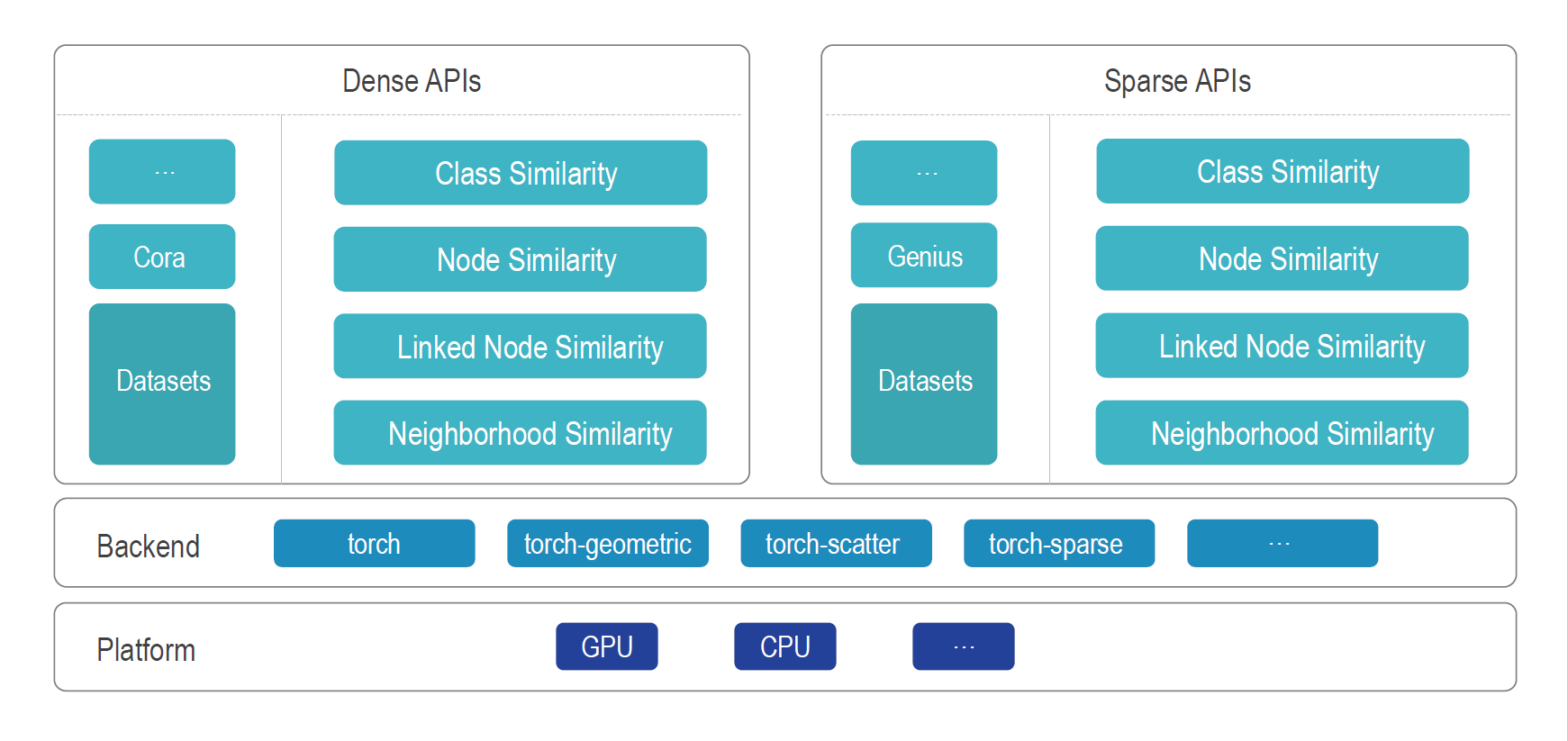This repository contains a pytorch implementation of Similarity-Navigated Graph Neural Networks for Node Classification
Graph Neural Networks are effective in learning representations of graph-structured data. Some recent works are devoted to addressing heterophily, which exists ubiquitously in real-world networks, breaking the homophily assumption that nodes belonging to the same class are more likely to be connected and restricting the generalization of traditional methods in tasks such as node classification. However, these heterophily-oriented methods still lose efficacy in some typical heterophilic datasets. Moreover, issues on leveraging the knowledge from both node features and graph structure and investigating inherent properties of the datasets still need further consideration. In this work, we first provide insights based on similarity metrics to interpret the long-existing confusion that simple models sometimes perform better than models dedicated to heterophilic networks. Then, sticking to these insights and the classification principle of narrowing the intra-class distance and enlarging the inter-class distance of the sample's embeddings, we propose a Similarity-Navigated Graph Neural Network (SNGNN) which uses Node Similarity matrix coupled with
The requirement.txt included all the dependencies. It main depends on:
- python=3.7.13
- torch=1.10.0+cu111
- torch-geometric=2.0.4
- torch-scatter=2.0.9
- torch-sparse=0.6.13
- torchvision=0.11.0+cu111
- scipy=1.7.3
- prettytable=3.3.0
- pyyaml=6.0
- icecream=2.1.2
- numpy=1.21.6
- pandas=1.3.5
- scikit-learn=1.0.2
- matplotlib=3.5.2
- seaborn=0.11.2
- tqdm=4.64.0
PyG is the abbreviation of torch geometric. To install PyG, you should install torch in advance. If you use GPU version, you also need to install CUDA in advance. The relevant packages torch-scatter, torch-sparse is also needed. PyG is now available for Python 3.7 to Python 3.10. More installation details refer to the official documentation: https://pytorch-geometric.readthedocs.io/en/latest/notes/installation.html#
CUDA and Torch official installation reference:
An example of install PyG relevant packages:
{TORCH}, {CUDA} is the installed torch and cuda version, respectively.
pip install torch-scatter -f https://data.pyg.org/whl/torch-${TORCH}+${CUDA}.html
pip install torch-sparse -f https://data.pyg.org/whl/torch-${TORCH}+${CUDA}.html
pip install torch-geometric
You can able to install other dependencies using pip (pip install xxx). If you do not yet have Python installed, I recommend starting with Anaconda.
The dataset and splits will be downloaded and processed automatically for the first time. Therefore, just download the repository and run it in the following ways after solving the environment.
To train and evaluate SNGNN_Plus_Plus for node classification with the command line:
python train.py --config ./config/config-test.yaml --data_splits --model SNGNN_Plus_Plus --num_layers 1 --dataset Chameleon --seed 3 --patience 200 --hidden_channels 32 --part_id 1 --top_k 10 --thr 0.9 --init_beta 0.0 --is_remove_self_loops 1 --dropout 0.5 --epochs 2000 --lr 0.01 --weight_decay 0.0005
Using the shell script to train with all settings:
sh train_script_SNGNN_Plus_Plus.sh

